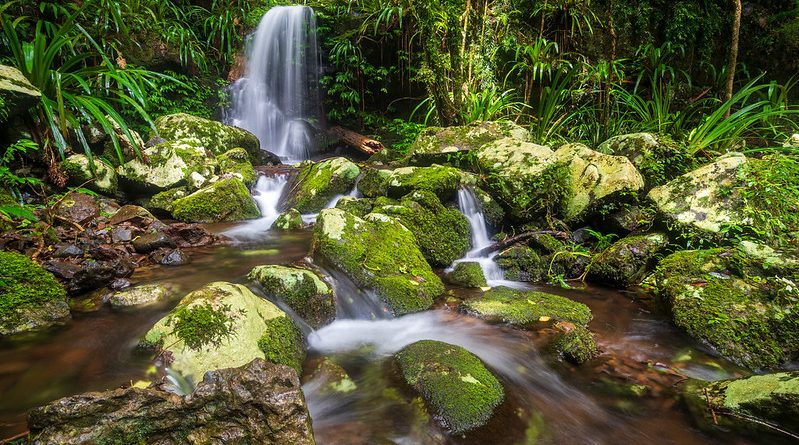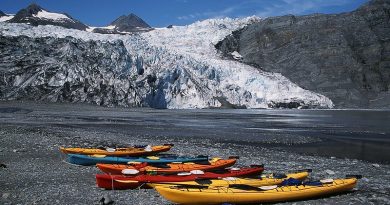Lamington National Park
Trek Essentials
Where: Lamington National Park, Southeast Queenland, Australia
Best season: Spring or Autum when it’s warm and not wet
Activities: Senses trail, hiking Mt Warning, abseiling or nature spotting for birds, koalas, wallabies & flying foxes
Remember to bring: sturdy boots, a warm sweater and waterproofs, hat, sunscreen, insect & leech repellent.
Lamington National Park in South East Queensland covers over 50,000 acres and is the result of 20 million years erosion of a massive volcanic mountain, the remnant core of which is Mt Warning, visible from several lookouts within the park. Known by the Aborigines as Wollumbin, meaning ‘fighting chief of the mountains’ because of the dramatic play of lightning around it during storms, its twin peaks rise above patches of ancient Antarctic beech forest, subtropical rainforest, eucalyptus woods, deep blue pools and cascading falls of exceptional clarity.
Things to see and do
Comprising over 100 miles of trails, ranging in difficulty and length from short walks to hikes of several days, the park’s unique position on a cusp between subtropical and temperate zones makes it host to an abundance of wildlife. Over 170 species of bird, plus echidnas, bandicoots, flying foxes, koalas and wallabies may all be seen here. A ‘senses trail’ for the blindfolded or visually impaired lets you slowly become aware of the lower temperature under the forest canopy and different sounds resolving themselves into bird calls, running water and rustling leaves. Alternatively, take a tree-top walk on suspended bridges 50ft above ground level, rising to mesh platforms 100ft up in the canopy to get a truly birds-eye view of the rainforest. If this isn’t enough to bring on an attack of vertigo, adrenaline junkies can abseil down steep volcanic faces.
World Heritage Listed in 1986, this area had been inhabited by Aborigines for thousands of years before the arrival of European settlers led to cedar felling, clearing of vast areas which tragically diminished the resources of the Aborigines. These days, travellers can lessen their impact on the environment by staying on the tracks to minimise erosion, taking nothing away with them except their rubbish, observing all fire-bans and using designated fireplaces.
Survival tips
Any time of year is good to visit, but most rainfall occurs between November and March, when daytime temperatures exceed 30C and nights are cool. Winters days are fine but much chillier – around 12 degrees, with evenings often freezing. However, the weather can be volatile with torrential storms during any season and you will need to come prepared with sturdy boots, a warm sweater and waterproofs, hat, sunscreen, insect & leech repellent. Pack a torch for nocturnal exploration and wildlife spotting and remember that daylight is scarce under the forest canopy so bring high-speed film for your camera!
If you are planning on camping, purchase permits well in advance and never attempt to hike without a map which is available from the rangers’ offices. Many trails will be hazardous after rain and some treks require a high level of fitness – always contact a ranger for advice if you are considering taking a less-defined route.
MORE INFORMATION
Walking Tracks of Lamington National Park Provides details of the different treks available to visitors
Where to stay:
Binna Burra Lodge
An eco-lodge since 1933
O’Reilly’s Rainforest Guesthouse
also contain details about safety issues, trails and wildlife.
Article By Sarah Rodrigues




